Keeping your dog safe in a wrought iron fence can be a challenging task. It is important to keep the fence strong and secure, as well as making sure that your pet has plenty of room to move around and explore without getting hurt or lost. This article will provide tips on how to make sure that you are taking all necessary steps to ensure that your dog is safe while contained in a wrought iron fence. We will discuss the importance of proper gate installation, choosing an appropriate size for the area, providing adequate shade and protection from harsh weather conditions, and other considerations when it comes to keeping your furry friend happy and secure within their enclosure.
Require Tools Materials
When it comes to keeping your dog safe in a wrought iron fence, there are certain tools and materials that will help you make sure the job is done right. Before starting, make sure you have the following items on-hand:
- Wrought iron fencing panels
- Posts for installation
- Spikes or bolts for attaching the fence to the posts
- Hammer and nails for installing the panels
- Tools for digging holes for the posts
It is also a good idea to have a few extra pieces of fencing material available in case any repairs are needed. Once you have all of your supplies ready, you can begin with the installation process.
Instructions: How To Keep Dog In Wrought Iron Fence
- Measure the perimeter of your wrought iron fence and purchase a pet gate that is wide enough to fit comfortably in the space. This will allow you to keep your dog contained while still allowing them access to the outdoors.
- Position your pet gate across one end of the fence, making sure it is locked firmly in place. The gate should be high enough to prevent your dog from jumping over, but low enough that you can open it easily.
- Place a few toys and treats in the enclosed space inside the fence to make it more inviting for your dog. This will encourage them to stay put and help keep their attention away from any potential escape routes.
- Spend time with your dog in the new enclosed space, playing and bonding with them. This will help create a positive association with the area and make it more likely that they’ll stay put when you leave them alone.
- Make sure to keep the fence secure at all times by repairing any breaks or gaps right away. Your dog should never be able to squeeze through a gap in the fence and make their escape.
- If necessary, install a collar or electronic containment system on your pet so that they remain within the boundary of the fence without fail. This is especially important for larger breeds or exceptionally agile dogs who may find ways to climb over the fence.
Make Sure That Your Wrought Iron Fence Is Tall Enough
The height of the wrought iron fence should be tall enough to keep your dog contained. A minimum of four feet is recommended for small breeds, while larger dogs may require a taller height.
Look For The Gaps In The Fence
One of the most important factors to consider when using a wrought iron fence to contain your pet is ensuring that the fence is tall enough. The height of the fence should be proportional to the size and jumping ability of your dog. If you have a smaller breed, you may only need a 3-foot high fence; however, if you own a larger breed, you may need a fence that is 4 or 5 feet tall. Additionally, make sure to inspect the fence for any gaps or openings that your dog could potentially squeeze through.
Bury The Fence Properly
In order to ensure that your dog is safely contained, it is important to make sure the fence is buried properly. This means digging a trench that is slightly wider than the width of the fence, and deep enough so that at least one-third of the height of the fence panels are below ground. Make sure to compact and slope the soil away from the fence panels so that water will not collect near them. Once the trench has been dug, place the fence panels into the trench, secure them with stakes, then backfill and tamp down the soil around them. This will help to ensure that the fence panels remain securely in place. Additionally, if you are using a double-width fence panel, make sure to use concrete or another type of filler material between the two panels to prevent them from shifting or coming apart.
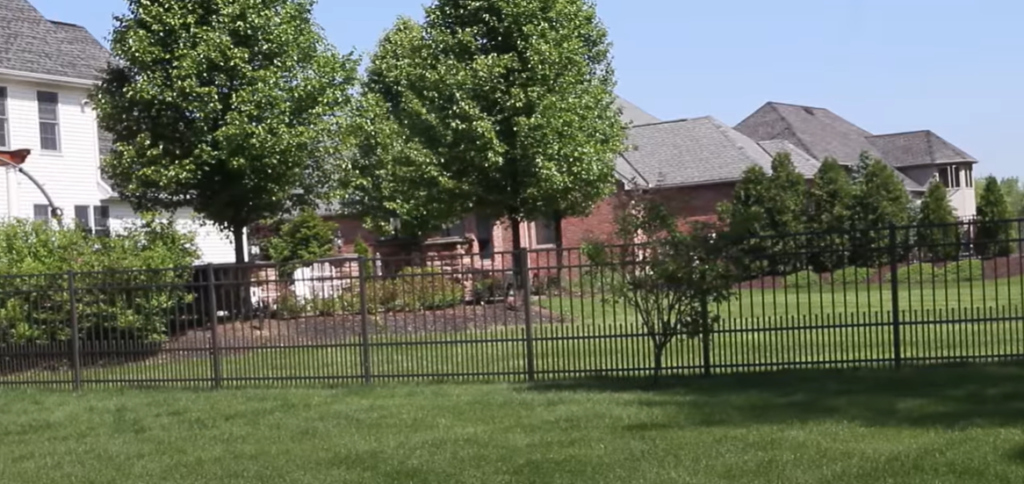
Fill The Bottom Of The Fence
The first step in keeping a dog safe and securely contained with a wrought iron fence is to fill the bottom of the fence with reinforced material. This will prevent any digging or climbing under the fence, and also help keep larger dogs from pushing through the gaps between pickets. You can use concrete, gravel, sand, or a combination of materials to fill the bottom of your fence. Be sure to keep the material away from any gaps in between pickets, as this could compromise the effectiveness of the fencing. [1]
Are Wrought Iron Fences Sturdy?
Yes, wrought iron fences are incredibly sturdy and provide a great option for containing an energetic pup. Wrought iron is durable, strong and weather-resistant, designed to withstand the elements without rusting or decaying over time. Furthermore, these fences have a timeless look that can add curb appeal to any property.
How Much Does A Wrought Iron Fence Cost?
The cost of a wrought iron fence can vary significantly, depending on factors such as size, complexity, and installation. Generally speaking, you’ll want to budget around $30-$50 per linear foot for the material alone. Labor costs can also add substantially to the overall cost; this is especially true if you need to hire professionals to install your fence. All in all, you can expect to pay anywhere from $2,500-$15,000 for a wrought iron fence. [2]
Type Of Iron Fencing
When selecting an iron fence for your dog, you need to consider the type of iron fencing that is best suited for keeping dogs in. There are several different types of wrought iron fences available on the market and each has its own benefits and drawbacks.
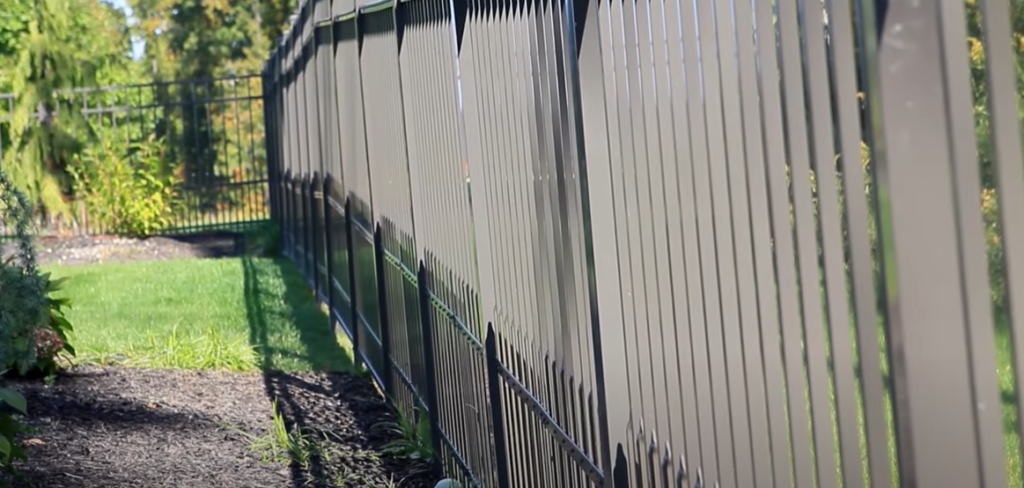
Twisted Barbed Wire
Twisted barbed wire fencing is an economical way to keep your dog securely confined in the yard. This type of fencing is created by twisting two or more strands of metal together, then attaching sharp points known as “barbs” along each strand. The height of this type of fence can range from 3-7 feet and typically consists of 4-8 strands. This type of fence is not ideal for keeping smaller breeds contained and can be harmful if your pet attempts to climb or chew on it.
Decorative Iron Fence
A decorative wrought iron fence offers an attractive and secure way to contain a pet. The strong metal fences provide an effective physical barrier that can help keep an animal inside the yard. Iron fences come in a variety of designs and can be customized to fit the style of any home or landscape.
Security Knee Wall Fencing
Knee wall fencing is an attractive option for pet owners who want to keep their pets secured in a wrought iron fence. This type of fence has a low profile and can be used as part of a larger fence or as a standalone barrier. Knee wall fences are typically made from metal, with vertical posts that support horizontal bars at the top and bottom. The vertical posts provide strength and stability, while the horizontal bars limit visibility and act as a deterrent to any potential intruders.
Knee wall fencing can be installed in a number of ways, including using concrete or metal posts that are buried into the ground. Pet owners can also opt for ornamental designs, such as decorative scrolls or finials, to add to the aesthetic appeal of the wrought iron fence. In order to keep a pet securely inside the fence, pet owners should always make sure that there are no areas where animals can squeeze through. To prevent this from occurring, it is important to ensure that the posts, vertical bars and horizontal bars are tightly secured into the ground. Additionally, any gaps between the ground and the fencing must be filled with gravel or dirt, to prevent animals from digging their way out. Finally, pet owners should always have a gate latch installed at the entrance of the fence, which will allow them to easily access and secure their pet without having to open the entire fence.
Boundary Fence
When having a wrought iron fence installed in your backyard, it is important to make sure that the boundary is well-defined and secure. This means making sure that all gaps between sections of the fence are sealed off properly. Additionally, if the dog will be allowed to roam freely outside of the fence, you’ll need to ensure that any gates are lockable and that no gaps exist that the dog can wiggle through. [3]
Some Of The Benefits Of A Wrought Iron Fence
When it comes to keeping your dog in a wrought iron fence, there are several benefits that make it an ideal choice.
First, the sturdy construction and height of wrought iron fences makes them a great deterrent against potential intruders and wild animals. The closed-top design helps give your dog the security they need while outdoors without being able to jump out of the fence. This helps provide peace of mind that your dog won’t be able to escape or get into any trouble while outdoors.
Finally, a wrought iron fence is a great way to add style and charm to any outdoor space. The sophisticated design looks great in any landscape and adds an elegant touch to any yard or garden. With its decorative potential, you can create the perfect atmosphere for you and your pet. [4]
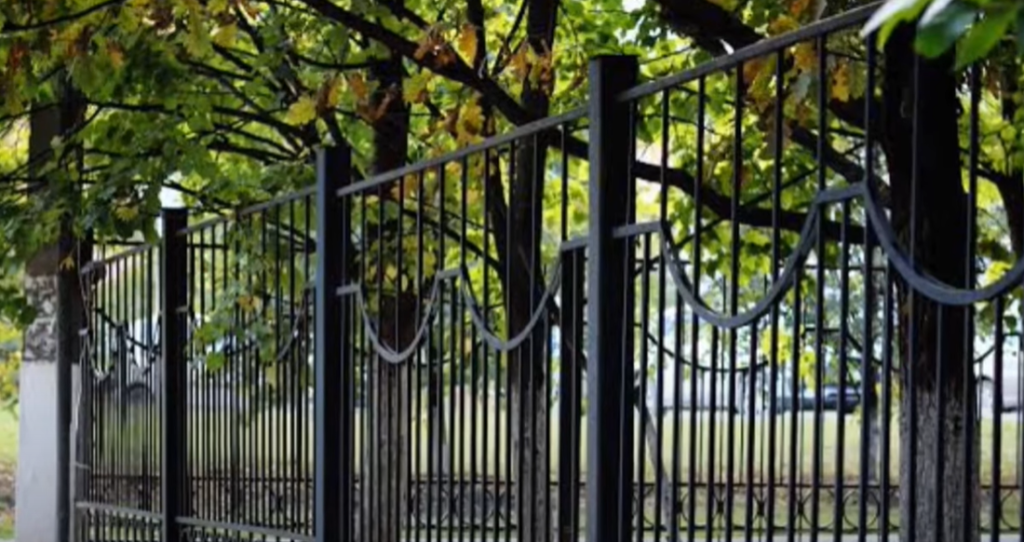
FAQ
How do I keep my small dog from going through a wrought iron fence?
The best way to keep a small dog from going through a wrought iron fence is to use welded wire fencing. This type of fencing has openings that are too small for a pet to fit through, making it difficult for them to escape. Additionally, you may want to install vertical bars at the top of your fence and/or add extra panels at the bottom of your fence to provide more stability. If you have a particularly determined pet, you may also want to consider adding an electric wire near the top of the fence, as this will deter them from attempting to climb. Finally, make sure that your gate is securely locked and that there are no loose sections of fencing that could easily be pushed aside. With these measures in place, you can be sure that your small dog will stay safely contained within the confines of your wrought iron fence.
How do you keep a small dog in the fence?
The most important factor to consider when keeping a small dog in a wrought iron fence is the size of the fence. The panels should be tall enough that your puppy won’t be able to jump over or squeeze through them. A good rule of thumb is to use 4 foot high fences for smaller breeds and 5 foot high fences for larger breeds.
How do you anchor a wrought iron fence?
Wrought iron fences are strong and attractive, but they need to be securely anchored in order to ensure your pet’s safety. Once you have chosen a fence style, properly anchoring the fence is essential. There are several different ways to anchor a wrought iron fence. The most common way is by using concrete footings.To install concrete footings, you need to dig deep enough into the ground so that the footing is stable and will not move. Use a shovel or post hole digger to create an 18-inch diameter hole for each fence post. Fill the hole with 3 inches of gravel before pouring in 4 inches of concrete (reinforced with rebar) and then tamping it down. Once the concrete has cured, you can place your fence post into the hole and secure it using anchor bolts.
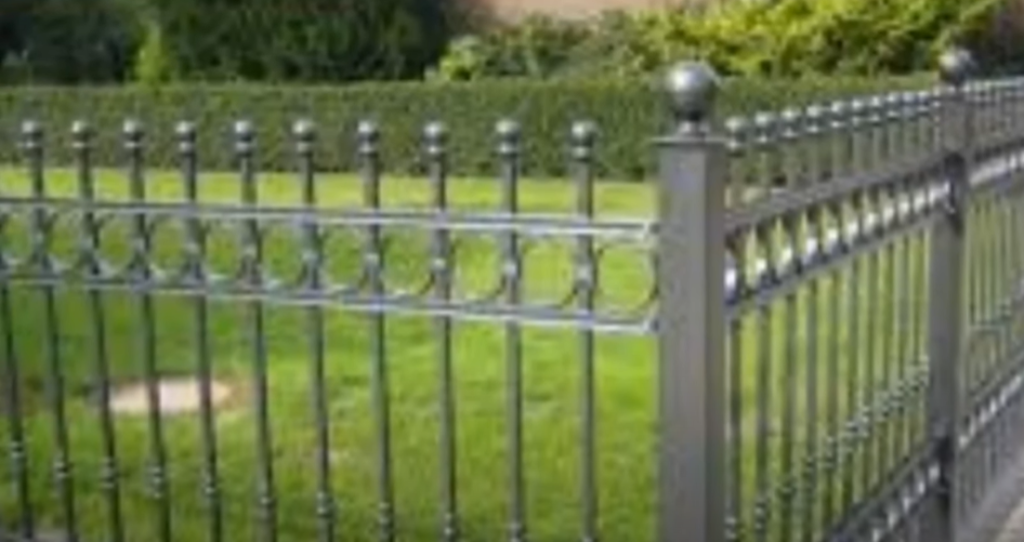
How do you pet proof a fence?
If you plan on keeping your dog in a wrought iron fence, it’s important to take steps to make sure the fence is pet proof. This will ensure that your pup can stay safely inside the enclosure without being able to escape or harm themselves. To start, check for any areas where the fencing may be weak or rusted. If any of these spots are found, repair or replace the sections that need attention. Additionally, make sure all hinges and latches on gates are properly functioning and secure.Next, consider ways to pet proof the fence by adding additional layers of protection. This can mean placing chicken wire along the inside of the fence (attached securely to the outside with zip ties), adding extra locks on gates, and ensuring any sharp edges are covered or removed. Finally, don’t forget to inspect the fence regularly for signs of wear and tear so you can make repairs as needed. With a little effort and dedication, your wrought iron fence can become a safe and secure enclosure that will keep your pup safe and happy.
Is a wrought iron fence good for dogs?
A wrought iron fence can be a great choice for keeping your dog safe and secure. When properly installed and maintained, a wrought iron fence will provide an effective barrier that is difficult to penetrate or climb. Wrought iron fences are also attractive, so they look great in any yard. The main advantage of using a wrought iron fence is that it provides a strong and durable barrier, making it difficult for your dog to escape.
How do you stop a dog from jumping over fences?
It can be difficult to keep a dog from jumping over a fence, but with some careful planning and preparation, it is possible. Here are some tips that may help:
- Reduce the height of the fence if possible. This will make it more difficult for your pet to jump over.
- Install lattice work or other barriers over the top of the fence to provide additional height and make it more difficult for your dog to climb or jump.
- If you have a wrought-iron fence, use caps or spikes on the points to make it harder for your pet to gain leverage when jumping.
- Train your dog not to jump. Reward them with treats and praise when they remain near the fence or on their side of it.
- Use a pet containment system, such as an invisible fence, to create a boundary your dog cannot cross.
- Keep your yard free of objects that could give your pet additional height when attempting to jump the fence.
How do I train my dog not to run away?
The best way to train your dog not to run away is by providing a safe and secure environment, along with consistent and positive reinforcement of desired behaviors. Start by making sure the wrought iron fence is secure, with no large gaps that your dog can escape through. Ensure there are no items around the fence that could be used as a ladder for your dog to climb over.
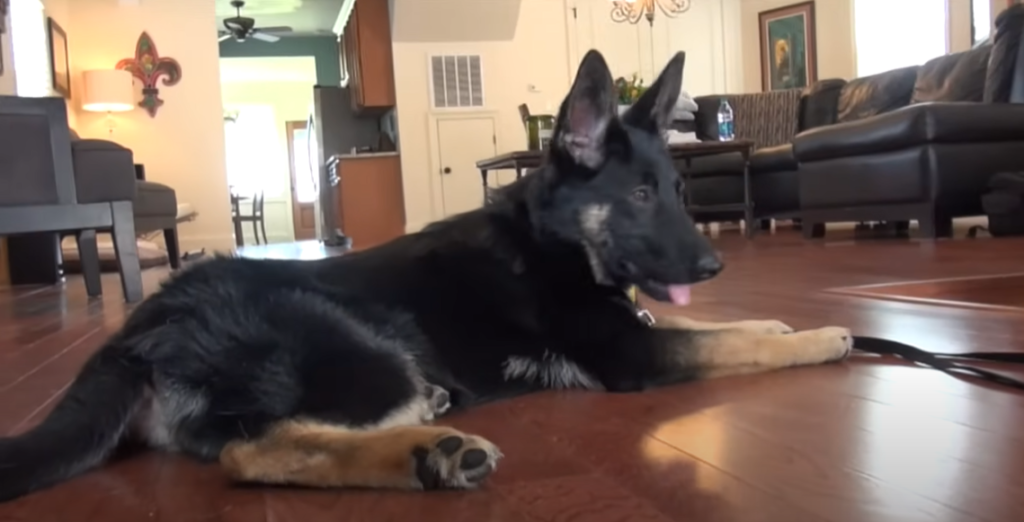
What can I put on top of my fence to keep my dog in?
One way to keep a dog in a wrought iron fence is to add extensions on the top that prevent your pet from being able to jump over. This can be done with mesh or lattice panels, which attach securely and offer extra security. If you do not want these options, consider adding slats on top of the fence—typically made of metal, vinyl, or plastic—designed to fit securely together and prevent your pet from being able to climb out. Another option is adding an angled cap to the top of the fence that would be difficult for a dog to climb over. Finally, spiky or “pigtail” tops can also be added, which are designed specifically to prevent animals from easily jumping out. Before making any changes, however, make sure to check with your local building codes for regulations on fence height and design. Additionally, be sure to take into account the size of your pet when considering what type of fencing extension is best for them.
Can you train a dog to stay in an unfenced yard?
Yes, it is possible to train a dog to stay in an unfenced yard. It takes patience, consistency and positive reinforcement, but with the right approach you can teach your pup to respect boundaries and remain safe in an open area. The first step in training your dog to stay confined is setting up boundaries within your yard.
Useful Video: Tool Girls: Puppy Guard Installation
Conclusion
Keeping a dog safe and secure in a wrought iron fence requires proper planning, installation, and maintenance. By taking the time to select an appropriate fence for your pup’s size, activity level, and environment; properly installing the fence; and regularly checking it for damage or wear and tear, you can ensure that your pet remains happy, safe, and secure in its outdoor home. With the right preparation and care, a wrought iron fence can provide years of security and peace of mind for both you and your pup.
Additionally, you may want to consider additional fencing ideas such as adding a barrier on top of the fence or using an electric or wireless option for extra protection. You may also want to speak with your vet about any health or behavioral concerns you may have before selecting a fence for your pup.
References:
- https://worldanimalfoundation.org/dogs/how-to-keep-dog-in-wrought-iron-fence/
- https://dogaspet.com/dog-lifestyle/how-to-keep-dog-in-wrought-iron-fence/
- https://mypetsguide.com/how-to-keep-dog-in-wrought-iron-fence/
- https://petshopmaeda.com/how-to-keep-the-dog-in-a-wrought-iron-fence/

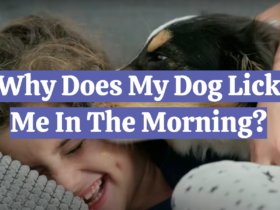



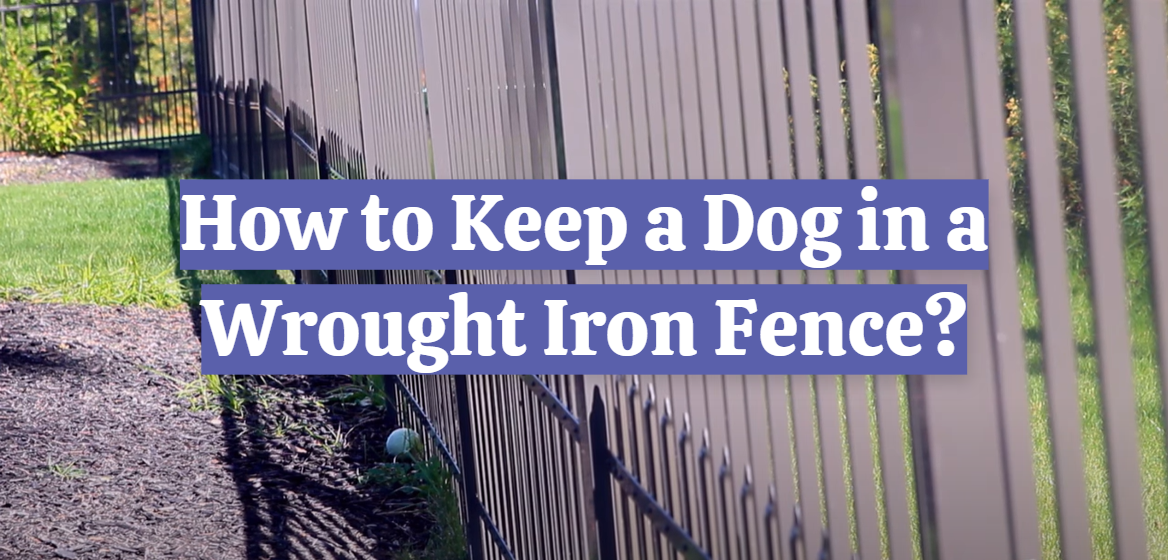

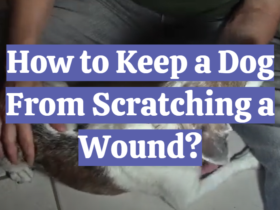
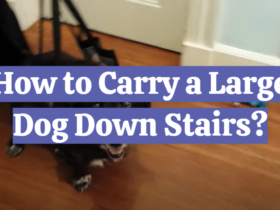

Living in a neighborhood with a wrought iron fence, I’ve found that keeping my dog safe and secure requires a combination of supervision and strategic modifications to the fence. One effective method is adding a layer of mesh or chicken wire to the inside of the fence. This prevents my furry friend from slipping through the bars, ensuring he stays within the confines of our yard. Additionally, I’ve reinforced the bottom of the fence with pavers or concrete blocks to prevent any digging attempts. It’s a simple yet effective solution that has given me peace of mind when my dog enjoys his time outdoors.
I’ve faced the challenge of keeping my energetic pup contained within a wrought iron fence, and one solution that worked wonders for me was installing coyote rollers. These are metal rollers mounted along the top of the fence that spin when touched. It’s an ingenious way to prevent my clever escape artist from scaling the fence. The rotating motion discourages any attempts to climb over, making it a fantastic addition to enhance the security of the wrought iron enclosure. Plus, the installation was straightforward, and it didn’t compromise the aesthetic appeal of the fence.
Dealing with a small dog who’s adept at slipping through narrow spaces in the fence, I discovered the effectiveness of vinyl or PVC-coated mesh. By attaching this mesh to the inside of the fence, I created a barrier that’s both durable and difficult for my furry friend to navigate. The added benefit is that it doesn’t obstruct the view or compromise the elegance of the wrought iron fence. It’s been a game-changer for me, ensuring my petite pup stays safe and sound within our enclosed space.
Having a dog with a penchant for digging, I faced the challenge of securing the bottom of my wrought iron fence. To address this, I opted for a solution that combines aesthetics with functionality—I planted a line of shrubs along the perimeter. Not only do these plants add a touch of greenery, but they also act as a natural barrier, discouraging my dog from digging under the fence. This approach not only enhances the overall look of the yard but also effectively addresses the specific challenge posed by my furry friend’s digging habits.
A wrought iron fence can be an effective enclosure, but it may pose challenges for smaller breeds. I’ve successfully addressed this issue by installing fence extensions. These are panels of iron that match the existing fence but add height to prevent my small dog from jumping over. It’s a seamless solution that doesn’t compromise the visual appeal of the fence while providing an extra layer of security. This modification has given my pet the freedom to roam and play within the yard without any safety concerns, making both of us happy.
As a dog owner living in an area with a wrought iron fence, I faced the challenge of keeping my curious pup from squeezing through the narrow gaps. After trying various solutions, I found that weaving weather-resistant fabric through the fence proved effective. This not only obstructed the openings but also added a decorative touch to the enclosure. The fabric blends seamlessly with the wrought iron, creating a secure barrier without compromising the aesthetic appeal of the fence. It’s a practical and visually pleasing solution that has kept my dog safely within the confines of our yard.
My experience with a particularly agile canine led me to explore anti-climb devices for my wrought iron fence. Adding angled extensions to the top of the fence not only enhanced its security but also served as a visual deterrent for my adventurous pup. The angled design makes it challenging for dogs to find a foothold or grip, preventing any attempts to scale the fence. This modification has been a game-changer, offering a secure environment for my pet while maintaining the integrity of the fence’s design.
Dealing with a persistent digger, I decided to address the issue by creating a dog-friendly digging zone within the fenced area. I designated a specific area filled with soft soil and sand where my dog could indulge in his digging instincts without causing harm to the fence. This not only curbed his desire to dig near the wrought iron but also provided a designated space for him to engage in a natural behavior. It’s a practical solution that has kept both my dog and the fence in excellent condition.
To prevent my enthusiastic dog from damaging the lower part of the wrought iron fence with his constant excitement, I opted for clear acrylic panels. These panels act as a protective barrier, shielding the fence from scratches and paw marks while allowing the beauty of the wrought iron to shine through. The transparency maintains the visual appeal of the fence while providing a practical solution to the wear and tear caused by my energetic pet. It’s a simple yet effective way to preserve the aesthetics of the fence in a household with an active and playful dog.
Encountering the challenge of a dog who tends to chew on anything in his reach, I needed a solution that would protect both my pet and the wrought iron fence. Applying a pet-safe bitter spray to the lower portion of the fence acted as a deterrent, discouraging my dog from nibbling on the metal. This simple and non-intrusive method kept my pet from causing any damage to the fence while ensuring his safety. It’s a practical approach that addresses the specific behavior of my dog without requiring extensive modifications to the wrought iron enclosure.
Living in an area with a wrought iron fence, I encountered the challenge of keeping my curious and agile dog contained. After some trial and error, I found that attaching decorative lattice panels to the inside of the fence was an effective solution. The lattice not only added a touch of elegance but also reduced the gap size, preventing my dog from slipping through. It’s a practical modification that seamlessly blends with the wrought iron design, providing both security and a visually appealing enclosure for my furry friend.
With a pup that loves to explore, I needed a way to reinforce the lower part of my wrought iron fence. Opting for durable vinyl-coated hardware cloth, I secured it to the bottom section, creating a sturdy barrier against any attempts to squeeze through or dig underneath. This approach not only addressed the escape risk but also added an extra layer of protection to the fence. The vinyl coating ensures longevity, making it a reliable solution for dog owners dealing with persistent diggers or escape artists.
Facing the challenge of a small dog slipping through the gaps in the fence, I decided to customize the wrought iron enclosure with a combination of decorative plants and narrow metal mesh. Planting dense shrubs along the inside of the fence created a natural barrier, while the mesh was strategically placed to fill any remaining gaps. This harmonious blend of greenery and metal not only secured the area effectively but also transformed the space into a lush and inviting environment. It’s a solution that considers both safety and aesthetics, offering a win-win for both me and my pet.
Dealing with a dog that loved to jump, I sought a solution that would prevent any attempts to clear the wrought iron fence. Adding extenders to the top of the fence not only increased its height but also provided a visually unobtrusive barrier. The extensions, matching the original design, seamlessly integrated into the existing structure. This modification successfully curbed my dog’s jumping tendencies, ensuring he stays safely within the confines of the yard while preserving the aesthetic appeal of the wrought iron enclosure.
In my experience, a wrought iron fence can sometimes pose challenges for dogs with a strong prey drive or those easily distracted by external stimuli. To address this, I incorporated privacy slats into the fence design. These slats not only obstructed the view from outside but also created a calming environment for my easily excitable dog. This modification significantly reduced his reactions to external stimuli, providing a more secure and serene space within the wrought iron enclosure. It’s a thoughtful solution that caters to the specific needs of my dog, making our outdoor time more enjoyable for both of us.